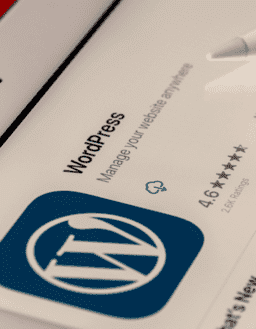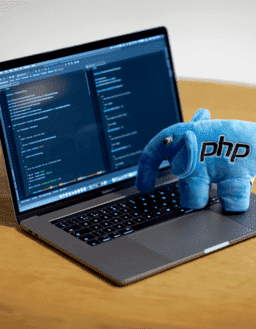Website speed is becoming a need, not a luxury, in 2025. Slow-loading pages are a quiet business killer, whether your organization is content-driven, offers services, or sells products. Users want almost instantaneous access; anything less than that is typically frustrating.
Beyond user discomfort, a slow website reduces your bottom line in ways you might not know. It lowers your SEO results, raises bounce rates, and affects your conversion rates. For companies competing online, particularly in the U.S., where customer expectations are high, performance impacts profits.
Without requiring advanced technical knowledge, this article seeks to provide practical and clear strategies to enable companies to optimize website performance. Since ultimately, website speed is a business necessity rather than only a technical task. And among the best investments you can make is spending time on web performance optimization.
1: Evaluate Your Current Website Speed
Knowing how your website functions now is essential before making any changes. Without understanding where the slowdowns occur, it is impossible to properly optimize website speed.
First benchmark using Lighthouse, GTmetrix, and Google PageSpeed Insights. These systems identify problems, give thorough load times, and even include recommendations specifically for your configuration.
Pay close attention to important indicators such as:
- First Contentful Paint (FCP), which shows how quickly your material starts to show.
- Largest Contentful Paint is the rendering speed of the largest visible element.
- Time to Interactive (TTI) is the length of time it takes for users to interact completely with your website.
Meaningful website speed optimization starts with the identification of performance bottlenecks, including large graphics, render-blocking scripts, or server latency.
2: Enable Compression
Compression comes next, rationally once you have found heavy files slowing down your load time. HTML, CSS, and JavaScript files are greatly reduced in size before they are viewed by the user, through programs like Gzip and Brotli. This speeds their load without compromising their appearance or performance.
Plugins like WP Rocket and W3 Total Cache let you implement compression with a few clicks if you use a CMS like WordPress. With developer help, activating Gzip on the server via configuration files is frequently simple for custom-built sites.
One of the main objectives of web performance optimization is to create a smoother user experience, which is achieved through faster transfers from smaller files.
3: Minify CSS, JavaScript, and HTML
Minification is the process of deleting all unnecessary characters like spaces, comments, and line breaks that computers do not need to read, but developers need for clarity in code files. Striking these out causes the files to shrink, and your website speed improves.
Automatic minification during the build process is supported by the majority of contemporary development workflows. This can be handled in the background by plugins like Autoptimize if you’re using a content management system.
However, testing after minification is important. Sometimes, improper minification of obsolete or poorly designed code causes it to break. Verify compatibility, particularly with third-party scripts or older browsers.
4: Take advantage of Browser Caching
One of the best, yet least used, methods for optimizing performance is browser caching. Saving previously loaded items, including images, stylesheets, and scripts in their browser cache, lets repeat users load your site faster.
Cache-control headers can be set up on your server to instruct browsers on how long to store each file. For instance:
- Fonts and images: Yearly cache.
- JavaScript and CSS: Month-long cache.
- HTML: Shorter caching to mirror consistent updates.
Most CDN providers or hosting companies let you control these parameters with minimal effort. Less server load and faster load times for users resulting from cached content translate into increased engagement and lower bounce rates.
5: Optimize Images for Web
On a page, images are often the heaviest components. On mobile devices, particularly, slow webpage speed mostly results from uncompressed or large photos.
Compress photos without apparent quality loss using TinyPNG or Squoosh tools. Also, switch to contemporary formats like WebP, which provides better compression than standard JPEG or PNG.
Use lazy loading, which loads images only when they are viewable, and use responsive image characteristics so that devices download just what they need. Many CMS systems today have plugins or built-in image optimization that automatically completes these tasks.
Optimized pictures can reduce load times by seconds, which search engines reward and users notice.
6: Reduce Server Response Time
Your server’s Time to First Byte (TTFB) is the amount of time it takes for a browser request to be processed. Server problems, such as shared hosting, ineffective server-side programming, or overburdened resources, may be the cause of a delayed TTFB.
Changing your hosting to a performance-oriented model or a dedicated server will make a big difference. You just need to find one that fits your traffic demand and can effectively manage surges; you do not have to target the most costly option.
Recall that a poor server response will bring everything down, even if your front-end is tuned. Server performance will always be part of a decent website speed optimization service’s plan.
7: Implement a Content Delivery Network (CDN)
A CDN disperses the content of your website among servers worldwide. A CDN lets consumers in California, Florida, or even overseas receive files from the closest data center rather than loading your site from a single U.S.-based server.
This lowers latency, increases download speeds, and offers a more constant experience anywhere. Typically, as easy as toggling a setting or copying a DNS entry, CDNs are compatible with most CMSs.
Using a CDN addresses dependability as well as speed. A CDN may usually provide cached versions of your site until it’s back online should your main server fail.
8: Eliminate Render-Blocking Resources
CSS and JavaScript files, known as render-blocking resources, stop the browser from showing content until they’re totally loaded. Even with a fast server, this causes a visual delay.
Load non-critical JavaScript asynchronously or postpone it to avoid blocking rendering. Likewise, remove and inline important CSS, the styles required to show the first visible content, so the website seems fast and the rest loads in the background.
Many contemporary build tools and plugins enable automation of this procedure, therefore facilitating the implementation of corporate websites without extensive technical expertise.
9: Optimize for Mobile Performance
Mobile speed optimization is essential because the majority of customers now browse on mobile devices. A quick desktop site will not maintain traffic or convert leads if it is slow on mobile.
Make sure touch elements are properly spaced and use responsive design, which adjusts to screen sizes. Google’s Mobile-Friendly Test is one tool that might help you identify problems. A few mobile-first strategies to think about are testing your website on actual devices and loading fewer assets.
Furthermore, Google’s mobile-first indexing implies that the mobile performance of your website will influence your whole search visibility. Never discount mobile optimization if you wish to optimize website for speed.
10: Regularly Audit and Monitor Website Speed
Performance is not something that can be set and forgotten. Things can slow down when your material expands or plugins are added. Frequent testing guarantees the effectiveness of your efforts at web performance optimization.
Using programs like Lighthouse or GTmetrix, schedule audits once a month. Turn on automated monitoring alarms to let you know when your site performs below a required level.
Many companies ignore this continuous maintenance until it is too late; it guarantees that your website speed does not gradually deteriorate.
Conclusion
Investing in website speed optimization now will pay off tomorrow and for years to come. Faster websites grab users, lower bounce rates, boost search results, and, above all, increase income.
Making speed a top priority for companies all around the United States is a competitive advantage. Having web performance optimization as a regular component of your maintenance strategy puts your company in a position to grow, convert, and succeed.
Frequently Asked Questions
1) How frequently should I assess the speed of my website?
Auditing regularly is essential! If your website receives regular content updates, plugin additions, or notable traffic variations, think about more frequent visits, weekly, perhaps. Additionally, offering real-time information on performance declines is automated monitoring alerts.
2) Will a total redesign of my website be necessary to optimize its speed?
Not always. Many of the techniques described enable compression, minify code, optimize pictures, and use browser caching, and can be applied without a complete redesign. On the other hand, a major revamp could be helpful for long-term performance increases if the underlying architecture of your website is quite outdated or ineffective.
3) How much of an impact faster website speed have?
Faster websites have better SEO ranks, lower bounce rates (users are less likely to quit), and greater conversion rates. This directly results in higher involvement and finally increased revenue.
4) I developed the website using a custom platform. Are these optimization suggestions still relevant today?
Yes! It doesn’t matter what platform your website is on; the fundamentals of website speed optimization, such as lowering file sizes, optimizing pictures, enhancing server response, and using caching, are universal. Although the precise implementation techniques may vary, like manual server configuration instead of PHP plugins, the fundamental ideas remain absolutely essential for efficiency. Developers can support customized implementations.








































